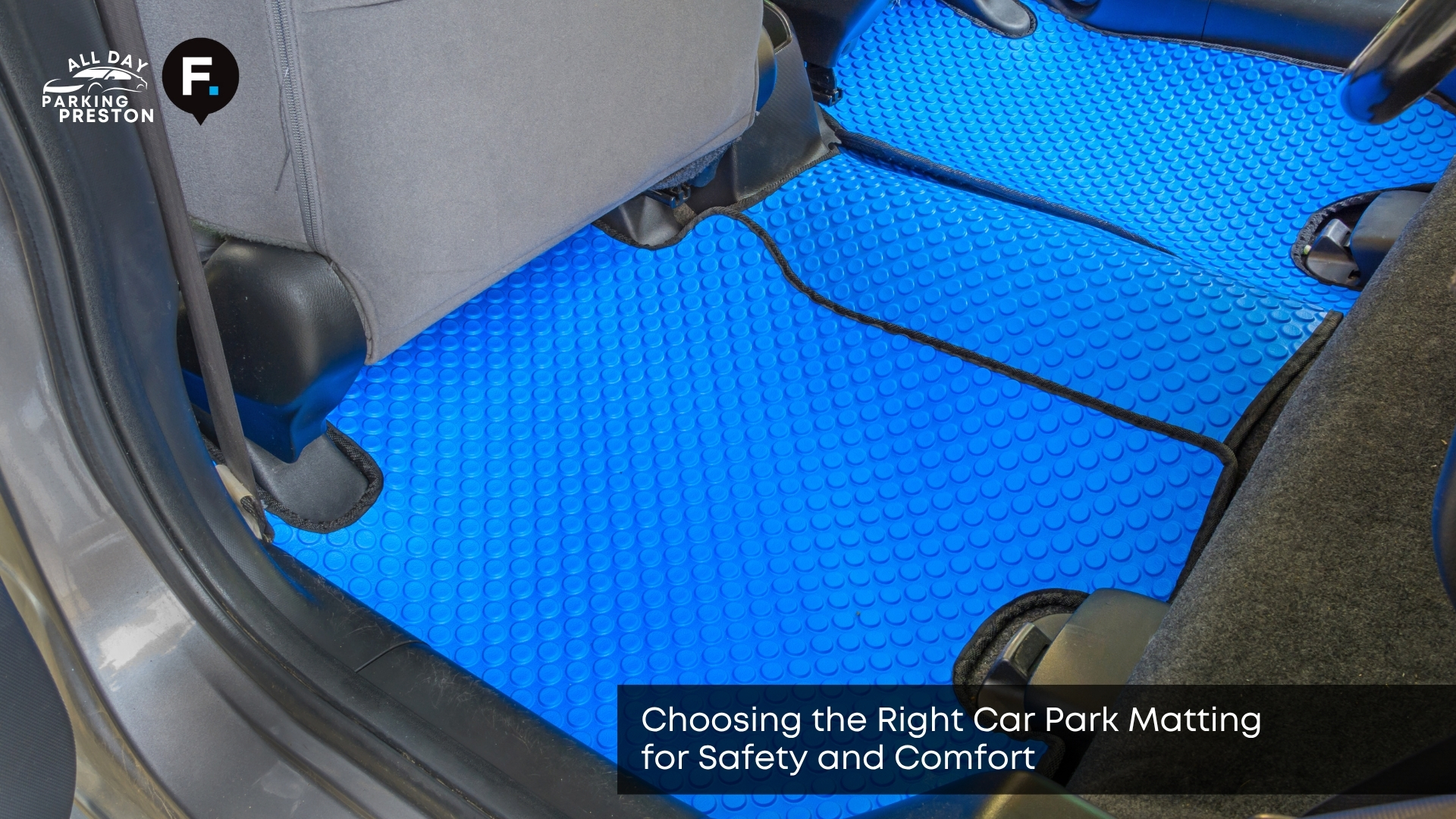Car park matting is not a significant issue. Still, it can make a substantial difference to both safety and comfort. Whether it’s for a public car park, residential parking bay, or even a private driveway, the right matting can prevent slips, protect surfaces, and improve the overall parking experience. This guide helps you choose the best matting solution by breaking down the key features and benefits to look for.
Why Does Car Park Matting Matter for Safety and Comfort?
Car park matting matters because it provides grip underfoot, reduces puddles, and stops vehicles from slipping on smooth surfaces. It also cushions the weight of parked cars, making it safer for both tyres and feet. A well-fitted mat can absorb sound, soften harsh ground, and create a more stable environment for walking and driving. Good matting helps avoid minor accidents and costly surface wear. Choosing the right type begins with understanding what’s available.
What Types of Car Park Matting Are Available?
The main types of car park matting include interlocking tiles, rubber sheets, grid systems, and permeable mesh rolls. Some are designed for permanent installation, while others are temporary and ideal for use at events or during seasonal periods. You can also find grass-reinforced matting for more natural car parks or rural settings. The type you choose should suit the location, the weight of vehicles, and how often it’s used. From here, materials play a key role in long-term performance.
Which Materials Offer the Best Grip and Durability?
Rubber and reinforced plastic are the most common materials that offer both grip and durability in car park matting. Rubber mats are flexible, slip-resistant, and ideal for comfort. At the same time, plastic grids are tough and resist crushing under the weight of heavy vehicles. Some premium options feature recycled materials that strike a balance between eco-friendliness and resilience. The surface finish also matters, with textured or ribbed designs offering extra grip. That grip becomes crucial in wet or icy weather.
How Do You Know If the Matting Is Slip-Resistant?
You can tell matting is slip-resistant by checking if it’s rated for anti-slip performance and has a textured surface. Many products also meet British Standards for public safety flooring. Look for designs that drain quickly and offer friction even when wet. Reviews and manufacturer data can confirm whether the matting remains safe under various conditions. If water build-up is an issue, consider drainage as your next feature to examine.
Should You Choose Matting with Drainage or Ventilation Features?
Yes, choosing matting with drainage or ventilation holes can help prevent puddles and keep surfaces dry. These designs prevent water from pooling, thereby reducing the risk of slipping and surface damage. Some mats even let air flow underneath, preventing mould or damp from forming. This is especially useful in multi-level or underground car parks where ventilation is limited. The next question is how your choice handles pressure from parked vehicles.
Is Rubber or Plastic Matting Better for Vehicle Weight and Movement?
Rubber matting is better for comfort and light vehicles. In contrast, plastic matting is ideal for use in heavier areas and high-traffic zones. Plastic grids spread the weight more evenly and are less likely to shift or dent under pressure. Rubber mats, on the other hand, offer better cushioning and are quieter underfoot and on the tyres. Depending on your environment, both options may have their place. For busy lots that require durability and compliance, parking permits in Preston often go hand in hand with surface upgrades. Their structure can also affect noise and comfort when walking across the surface.
What Role Does Car Park Matting Play in Reducing Noise and Vibration?
Car park matting reduces noise by dampening the sound of tyres, footsteps, and movement. Rubber mats are particularly effective in reducing vibrations, which can improve user comfort and decrease noise complaints. For areas near homes or offices, this can make a big difference. Quieter spaces also feel more inviting and professional. All of this contributes to surface protection over time.
Can Proper Matting Help Protect the Car Park Surface Itself?
Yes, proper matting protects the car park surface by absorbing pressure and preventing cracks, dents, or surface wear. It acts as a barrier between the vehicle and the base, stopping leaks or tyre marks from damaging concrete or tarmac. This reduces maintenance costs and helps surfaces last longer. For a closer look at how base materials and coatings factor in, explore different car park surface types and their long-term effects. A well-maintained matting system is often cheaper than resurfacing an entire car park.
How to Choose the Right Car Park Matting for Your Needs
To choose the right car park matting, consider the type of vehicles using the space, the expected foot traffic, drainage needs, and local weather conditions. Check slip-resistance ratings, durability, and whether it’s easy to clean or replace. If comfort is a priority, rubber is a good choice. For strength, reinforced plastic is often the best choice. Think long-term and choose something that strikes a balance between safety, performance, and cost. For inspiration on trusted Preston car park solutions, look at real examples that combine durability and user comfort. With the right choice, you can make your car park safer, cleaner, and more pleasant for everyone.


Leave a Reply